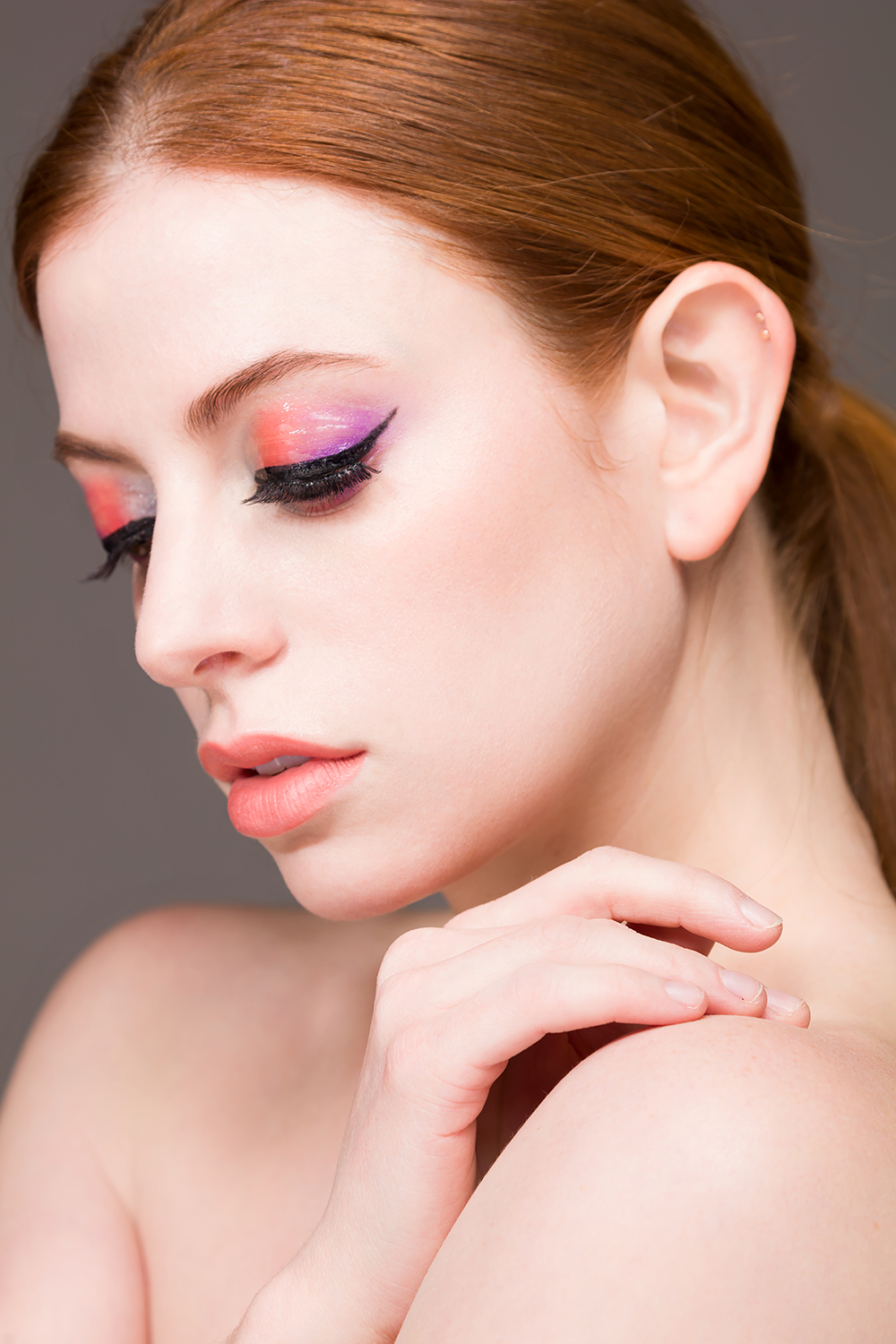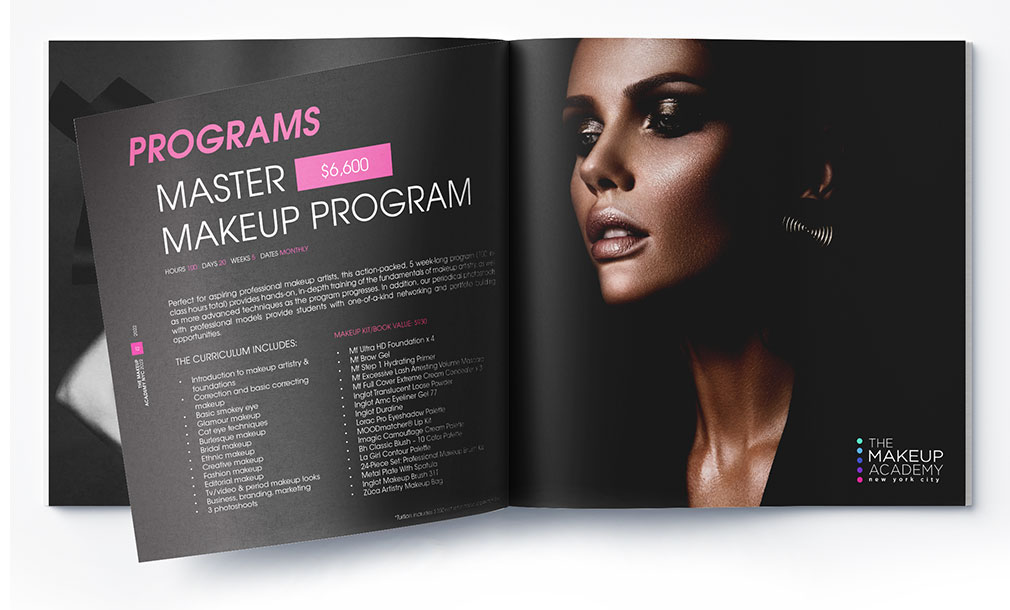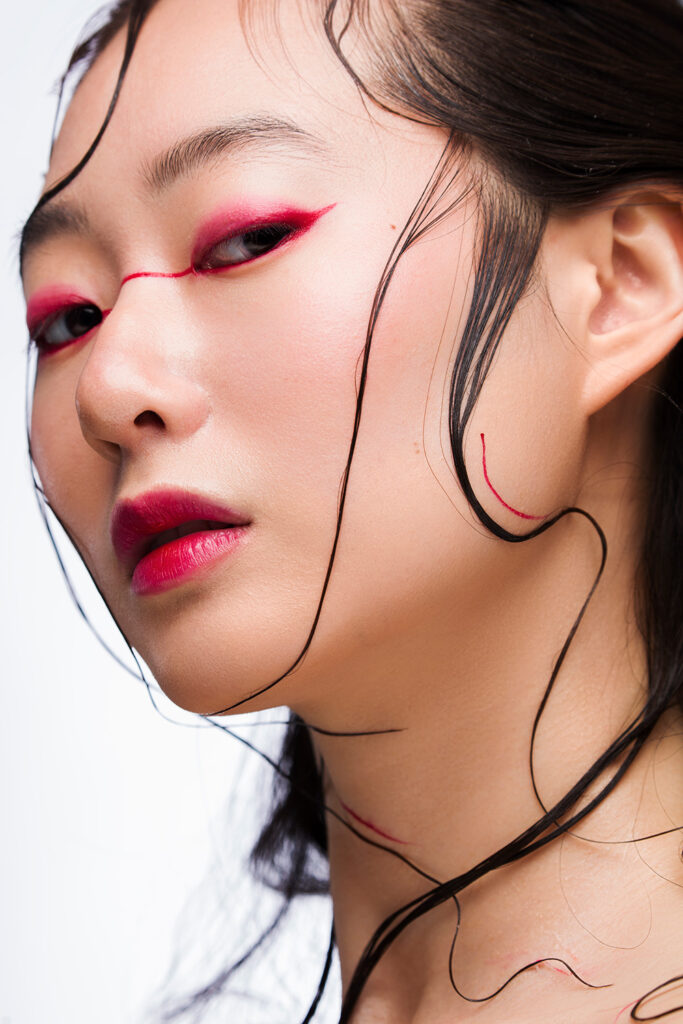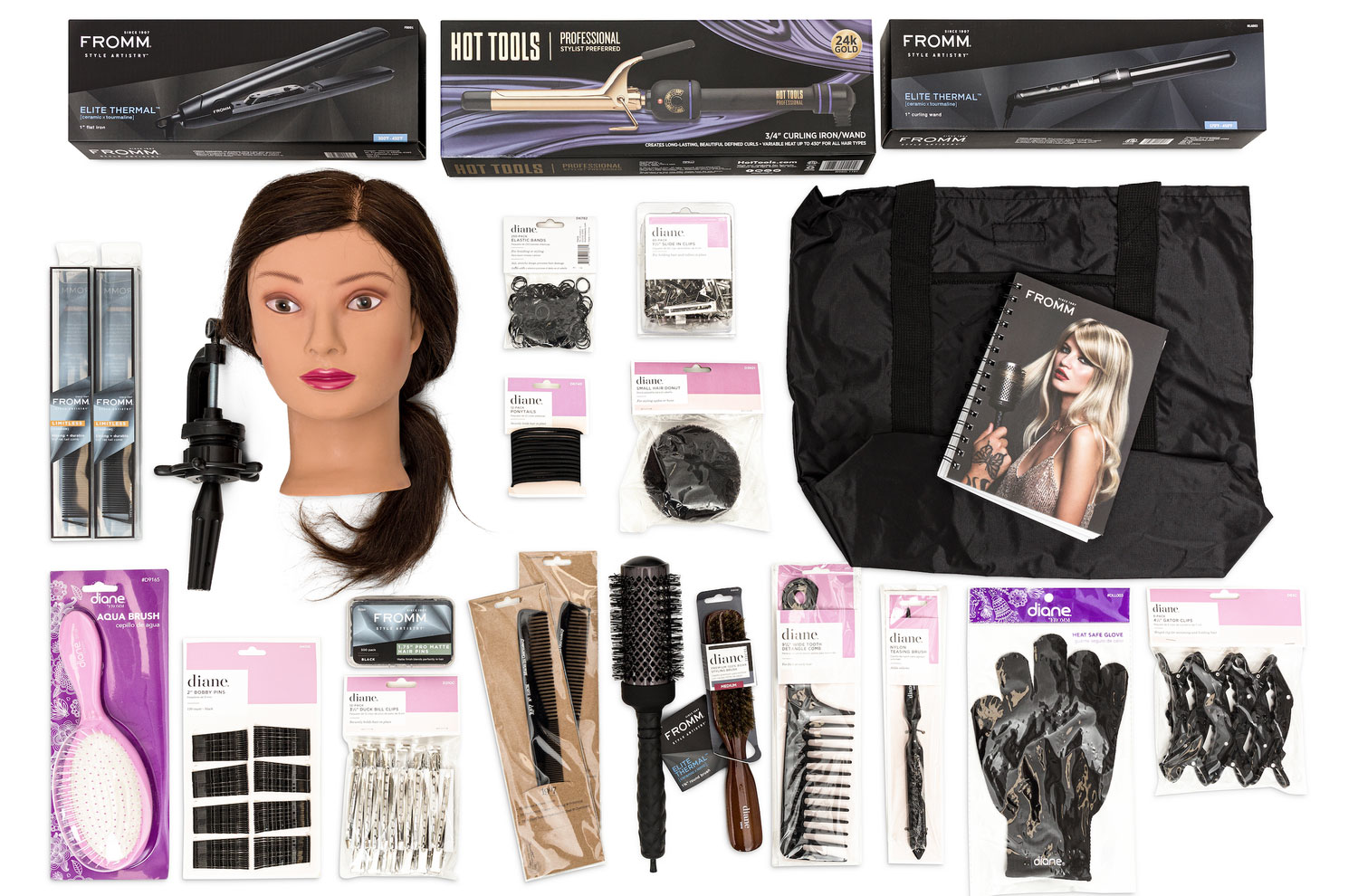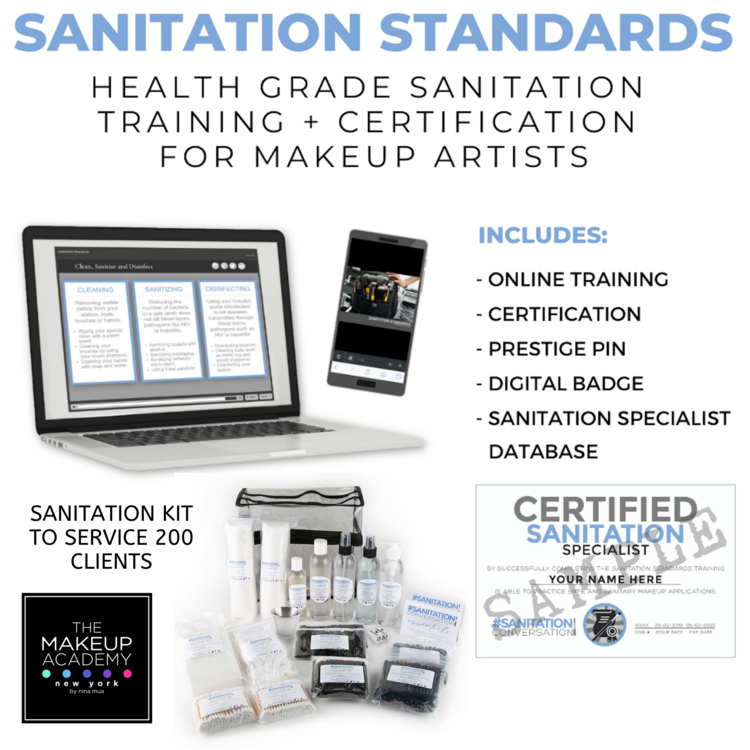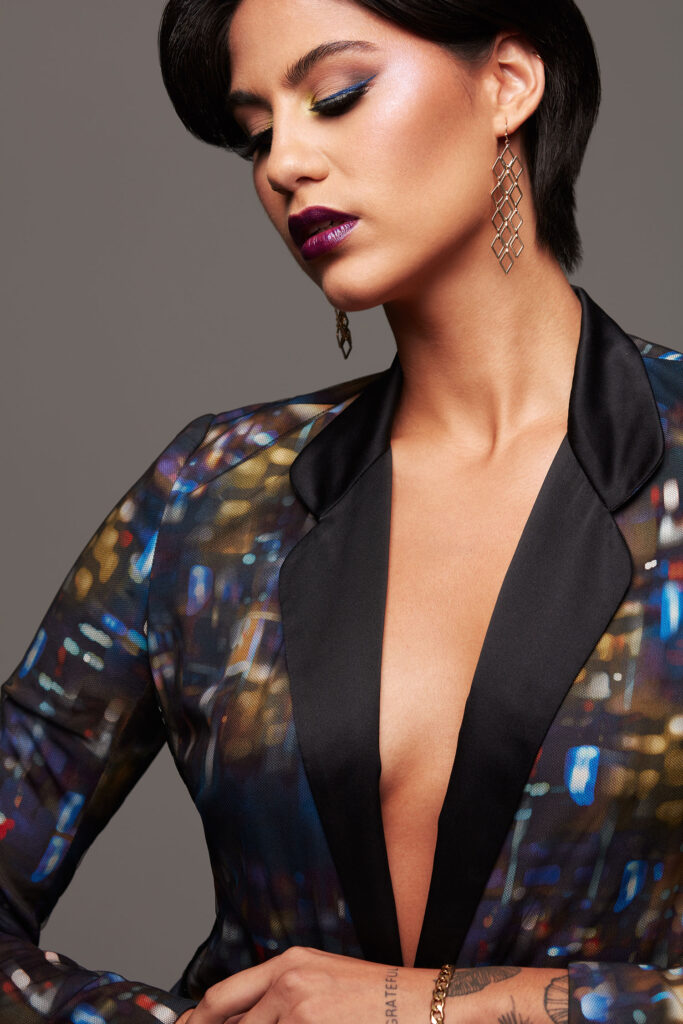Introduction – Makeup as a Confidence Builder
For many people living with acne or rosacea, sitting in the makeup chair comes with mixed emotions. These conditions don’t just affect the skin; they can deeply influence confidence and self-image. That’s where the art of corrective makeup steps in.
Corrective techniques aren’t about hiding someone’s face behind layers of product. Instead, they’re about restoring balance, evening out the complexion, and helping clients feel radiant without feeling “masked.” A skilled MUA knows how to use skin prep, color theory, and gentle application methods to achieve coverage that looks seamless and natural.
As artists, our role isn’t only technical, it’s also empathetic. Whether you’re working with a bride, a model on set, or a client preparing for a special occasion, the goal is to create comfort, trust, and confidence through makeup.
At The Makeup Academy NYC, we teach students how to pair artistry with an understanding of skin conditions. Through our Skincare + Pro Makeup Certification Program, artists gain the advanced training needed to work confidently with clients experiencing acne, rosacea, or other sensitivities.
In this guide, we’ll walk through practical corrective makeup steps from skincare prep to foundation finishes, along with professional tips that can expand your artistry and career opportunities.
Understanding the Skin Conditions First
Before reaching for a foundation or concealer, it’s essential to understand what you’re working with. Both acne and rosacea have unique challenges that affect how makeup should be applied.
Acne:
- Caused by inflammation, clogged pores, or hormonal triggers.
- It can show up as active breakouts, scars, or post-inflammatory redness.
- Skin often fluctuates between oily and dry, making product choice critical.
Rosacea:
- A chronic condition marked by redness, visible blood vessels, or sensitivity.
- Often flares up with stress, heat, or certain products.
- Skin can be highly reactive, requiring a gentle hand and soothing formulas.
As a professional MUA, knowing these distinctions helps you:
- Choose the right formulas that won’t irritate sensitive skin.
- Apply coverage strategically rather than heavily.
- Approach each client with care, asking about their triggers and preferences.
This knowledge is also a confidence builder for clients. When they see that you understand their skin concerns, they’re more likely to relax and trust your artistry.
For MUAs pursuing advanced training, The Makeup Academy NYC offers specialized programs like the SFX Makeup Program, where artists explore both beauty and corrective techniques that push artistry to a professional level.
Skin Prep for Sensitive or Inflamed Skin
The foundation of corrective makeup begins with proper skin prep. Without it, even the best products won’t sit comfortably or last.
Steps for sensitive skin prep:
- Hydration is key: Use calming, lightweight moisturizers to reduce flakiness and prep the canvas. Avoid heavy or fragranced creams.
- Soothing primers: Formulas with green tint or anti-redness ingredients can help neutralize rosacea flare-ups before makeup.
- Sanitation: Keep brushes, sponges, and palettes sanitized. Sensitive skin is more prone to irritation and infection, so a hygienic kit builds trust.
- Comfort-focused process: Always check in with the client. Is the product stinging? Does the touch feel gentle? These small conversations show professionalism and empathy.
At The Makeup Academy NYC, skincare prep isn’t treated as a side note; it’s part of our pro training. Artists learn how to evaluate skin before application, use the right prep products, and create a breathable base for long wear.
If you’re serious about building expertise in corrective makeup NYC, our class schedules are designed to help artists expand their skills while balancing busy lives.
Corrective Color Theory in Action
Corrective makeup lives and breathes through color theory. For acne and rosacea clients, strategic use of correctors makes the difference between visible coverage and flawless blending.
- Green correctors: Counteract redness from rosacea flare-ups or fresh blemishes.
- Peach/Orange correctors: Neutralize dark marks or hyperpigmentation left behind from acne scars.
- Blending: Correctors should disappear under foundation, not sit visibly on top. Stipple gently with a sponge for seamless diffusion.
Mastering corrective color theory is more than technique; it’s about elevating your artistry. These are the same skills used in editorial shoots, bridal work, and even advanced applications like rosacea camo makeup.
Foundation Application: Light Yet Effective
When working with inflamed or textured skin, less is always more. A heavy base can emphasize texture, while thin layers allow skin to breathe.
- Non-comedogenic formulas: Choose breathable foundations that won’t clog pores.
- Layering thin coverage: Apply in light passes, building only where necessary.
- Application tools: Use stippling brushes or damp sponges to press product in rather than dragging across skin.
Clients often expect full coverage, but the artistry lies in creating a natural finish that still looks radiant. This approach is a cornerstone of advanced pro training at The Makeup Academy NYC.
Strategic Concealing Without Caking
One of the biggest mistakes MUAs make is over-concealing. Instead, think “pinpoint” coverage.
- Pinpoint concealing: Target only blemishes or redness with a small brush.
- Right textures: Use cream concealers for scars, lightweight liquids for diffused redness.
- Setting smartly: Apply a finely milled powder to set, avoiding buildup around problem areas.
Corrective makeup for acne and rosacea should feel invisible on the skin, giving confidence without heaviness.
Choosing the Right Finishes
Finish matters just as much as coverage.
- Dewy for rosacea: A soft glow helps distract from redness and creates a healthier look.
- Matte vs. natural: Use natural finishes for longevity without making skin look flat.
- Avoid shimmer: Shimmery powders or highlights can exaggerate texture and scarring.
In advanced artistry programs like the SFX Makeup Program, students learn to manipulate finishes for both beauty and character design. That same control applies to corrective looks.
Long-Wear and Comfort on Special Occasions
Corrective makeup often needs to last weddings, photoshoots, and stage work. Comfort and durability go hand in hand.
- Locking techniques: Setting sprays + gentle powders.
- Touch-up kits: Small powder and concealer for clients on the go.
- Longevity tips: Teach clients how to blot, not rub, to maintain coverage.
By preparing both the look and the client, MUAs ensure the results last without compromising comfort.
Professional Tips & Career Angle
Working with acne and rosacea clients isn’t just about skill, it’s about building trust and reputation.
- Client communication: Always ask about sensitivities, allergies, and skincare routines.
- Portfolio building: Document transformations (with client consent) to show your expertise.
- Career opportunities: Specialized corrective makeup training sets you apart in bridal, editorial, and medical-related artistry.
The Makeup Academy NYC empowers artists to gain these skills through pro certifications and hands-on courses. Learn more by exploring our contact page and speaking with our advisors about which program fits your goals.
Conclusion – Empowering Through Skillful Makeup
Corrective makeup is about more than technique; it’s about compassion. When you combine skincare prep MUA knowledge with artistry, you help clients feel seen, not hidden.
Recap:
- Prep and hygiene create a strong foundation.
- Correctors and thin layers ensure natural coverage.
- Finishes and longevity techniques keep looking comfortable.
- Professional training opens doors to specialized careers.
At The Makeup Academy NYC, we believe in teaching both the artistry and empathy behind corrective makeup. Our programs, from bridal artistry to pro skincare training, prepare artists to confidently handle all skin types.
Corrective makeup transforms not just appearances, but lives. With advanced skills, you can become the artist who helps clients rediscover their confidence.



